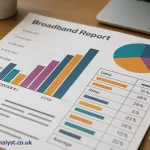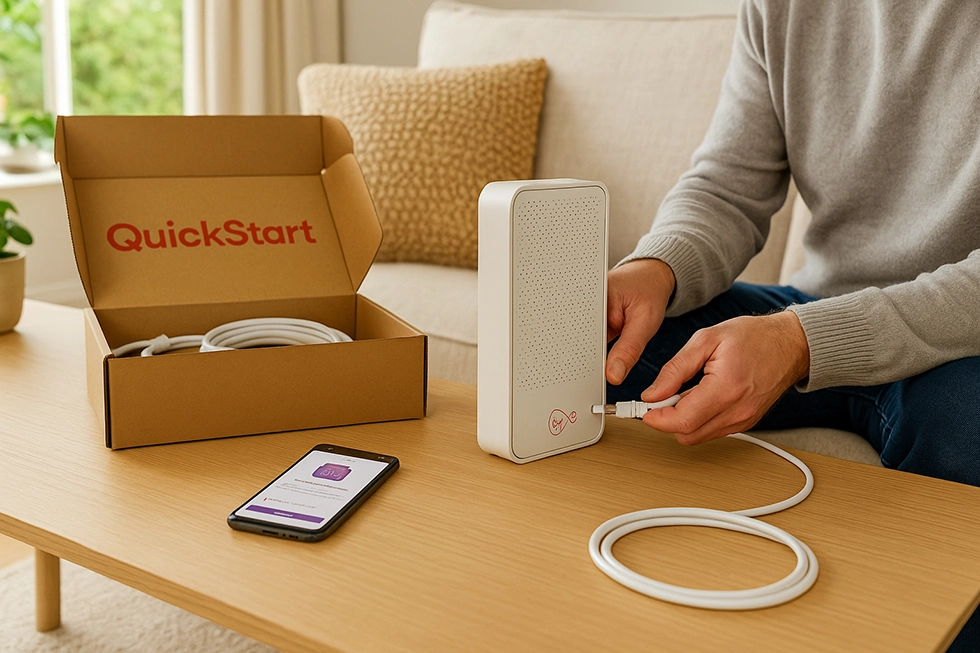Openreach, the UK’s main wholesale broadband provider, has reported a sharp rise in data carried over its full fibre network in the first half of 2025. Traffic volumes increased by more than a third compared to the same period in 2024, showing how quickly usage is growing as more households and businesses connect to fibre to the premises (FTTP) services.

What is Openreach and why full fibre matters
Openreach is the division of BT that builds and maintains much of the UK’s broadband infrastructure. It sells wholesale access to hundreds of internet service providers including BT, Sky, TalkTalk and Vodafone. Full fibre, also known as FTTP, refers to broadband delivered entirely over fibre optic lines directly into the home or business, without relying on older copper cables. This technology offers much faster download and upload speeds, as well as greater reliability, compared to part-fibre or legacy connections.
Traffic growth highlights
Between January and June 2025, traffic on Openreach’s full fibre network rose by over 35% compared to the same months in 2024. In contrast, usage across the whole of Openreach’s broadband network, which still includes older copper-based services, increased by just 5%. The figures underline the way fibre customers tend to consume more data, helped by faster connections and the ability to connect more devices at once.
Busiest days and causes of spikes
The busiest day for Openreach’s network so far this year was 21 February 2025, when a major Fortnite update prompted a surge in downloads, pushing traffic to 372 petabytes (PB). Other peaks came on 5 January, 7 June, 8 June, and on New Year’s Day, with daily volumes ranging between 346 PB and 357 PB. These spikes reflect how large software updates, game releases, and holiday periods can put extra strain on broadband networks.
Usage patterns and behaviour
As in previous years, the heaviest usage across Openreach’s network continues to occur in the evenings between 8pm and 10pm. This is the period when households are most likely to be streaming films and TV, playing online games, or using multiple devices simultaneously. The growing reliance on high-quality video streaming and online gaming has been a key driver of data demand.
Roll-out progress and investment
Openreach has invested around £15 billion in building its full fibre network. At present, coverage has reached about 20 million premises. The company’s target is to expand this to 25 million by the end of 2026, and potentially up to 30 million by 2030. However, reaching the longer-term figure will partly depend on regulatory outcomes from Ofcom’s Telecoms Access Review in 2026, which will set the rules for how networks operate and compete over the rest of the decade.
Adoption and the coverage gap
Although more than 7.5 million customers have upgraded to full fibre services, there are still around 12 million homes that have access to the network but have not yet made the switch. This adoption gap is a major challenge, as it means many households are missing out on faster speeds and more reliable connections even when they are available. For businesses and remote workers, the benefits of fibre can be significant, ranging from better video conferencing quality to faster uploads for cloud storage and collaboration.
Average broadband usage
Figures published by Ofcom at the end of 2024 show that the average UK household consumed around 531GB of fixed broadband data each month across all types of connections. For households on full fibre, the monthly average was much higher, at around 766GB. This difference highlights the link between faster broadband speeds and greater data use, as customers are more likely to stream in ultra-high definition, download large files, and connect more smart devices.
Regulatory and policy context
Ofcom plays a central role in overseeing broadband roll-out and competition. Its annual Connected Nations reports track progress on coverage and usage, while the upcoming Telecoms Access Review for 2026–2031 will determine how wholesale pricing and access obligations are set. Policy decisions will influence how quickly the UK can close the coverage and adoption gaps, and how fairly the market works for both consumers and smaller providers.
Broader trends and implications
The sharp rise in traffic is consistent with wider digital trends. Remote work remains common, streaming services continue to grow in popularity, and online gaming updates frequently generate sudden spikes in traffic. These demands are testing the limits of existing infrastructure, which is why the move to full fibre is seen as essential for long-term reliability.
The UK is aiming for nationwide gigabit coverage by 2030, in line with similar goals in Europe. Countries like Spain and Portugal are already ahead in fibre adoption, while the UK has been catching up quickly in recent years. Ensuring equitable access remains a challenge, especially in rural areas where costs are higher and roll-outs are slower.
Context from Ofcom and forecasts
Ofcom forecasts suggest that almost all UK premises will have access to fibre broadband by 2027. However, availability does not guarantee take-up. A growing number of homes technically within coverage still remain on older copper-based broadband, often due to price sensitivity or lack of awareness of the benefits. The regulator has been encouraging providers to promote social tariffs and make switching easier to close this gap.
Future challenges
The growth of fibre traffic in 2025 confirms that demand for data will continue to rise. Future challenges for providers like Openreach include ensuring that coverage targets are met, persuading more households to upgrade, and managing costs in a competitive market. At the same time, regulators will need to balance investment incentives with affordability and fair competition.
Conclusion
Openreach’s figures for the first half of 2025 show just how quickly broadband use is shifting towards full fibre. A 35% increase in fibre traffic, compared with only 5% growth on the wider network, highlights the difference fibre makes to consumer behaviour. With coverage expanding and demand continuing to climb, the next few years will be critical in making sure that the UK’s broadband infrastructure can keep pace with how people now live, work and play online.










